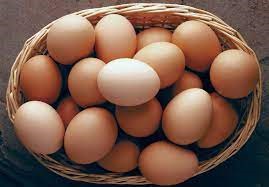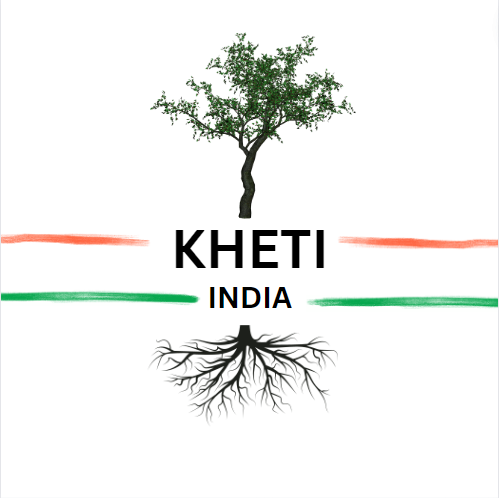Agriculture in India has witnessed several significant transformations, often termed “agricultural revolutions.” Agriculture revolutions have played a pivotal role in enhancing agricultural productivity, ensuring food security, and improving the livelihoods of millions of farmers across the country. India has witnessed different agricultural revolutions, including the Green, Evergreen, Yellow, Blue, Golden Fiber, Golden, Grey, Pink, Silver, Red, White, Silver Fiber, and Protein Revolutions.
The agriculture revolutions have had a great impact on changing the dynamics of agriculture in India, and in this article, we will understand the importance of each in deep.
Evergreen Revolution
The Evergreen Revolution is a concept introduced by Dr. M.S. Swaminathan. It aims at achieving sustainable agriculture by increasing productivity without compromising the environment. The focus is on using fewer resources like water and pesticides while leveraging modern information and communication technology (ICT). The Digital India initiative, with its e-Kranti pillar, provides technology solutions to farmers, helping them access crucial information such as weather forecasts, planting schedules, and market prices.

Yellow Revolution
Initiated in 1986-1987, the Yellow Revolution focused on boosting the production of edible oils from oilseeds like mustard and sesame. Sam Pitroda was a key figure behind this revolution. The introduction of hybrid seeds significantly increased edible oil output, especially in Punjab, where sunflower crops thrived.

Blue Revolution
The Blue Revolution, also known as “Nili Kranti,” aimed at expanding the aquaculture sector. Launched during the 7th Five Year Plan (1985-1990), it was spearheaded by the Fish Farmers Development Agency (FFDA). This revolution led to the establishment of fishing harbors in cities like Vishakhapatnam, Kochi, Tuticorin, Porbandar, and Port Blair. The initiative focused on increasing fish production and improving the livelihood of those involved in the fisheries sector.

Golden Fiber Revolution
The Golden Fiber Revolution focuses on the production of jute, a natural fiber known for its golden sheen. Jute has been a significant part of India’s agricultural history. The revolution aimed at reviving the jute industry, which faced numerous challenges post-independence.
Golden Revolution
From 1991 to 2003, India experienced the Golden Revolution, characterized by significant investments in the horticulture sector. This period saw a boom in the production of fruits like cashew nuts, coconuts, and mangoes. The revolution not only improved the economic conditions of farmers but also introduced innovative techniques like greenhouse farming.
Grey Revolution
The Grey Revolution emerged to address the limitations of the Green Revolution. It focused on creating sustainable food systems through agricultural solutions. This revolution aimed at enhancing yield and profitability for smallholder farmers by providing them with the necessary tools and support.

Pink Revolution
The Pink Revolution pertains to the modernization of the poultry and meat processing industry. It aimed at improving technology in the meat and poultry sector to meet international standards and cater to the growing domestic market.

Silver Revolution
The Silver Revolution signifies a significant increase in egg production through advanced techniques and technology. Dr. BV Rao, the founder of Venkys, played a crucial role in transforming the poultry industry in India.

Red Revolution
The Red Revolution focused on increasing the production of meat and tomatoes. Driven by technological advancements and resource expansion, this revolution aimed at meeting the growing demand for these products. Vishal Tewari is recognized as a key figure in this revolution.

White Revolution
The White Revolution, also known as Operation Flood, aimed at increasing milk production in India. It established a national milk grid that connected farmers to consumers, reducing price disparities. Dr. Verghese Kurien, known as the Father of the White Revolution, was instrumental in its implementation.

Silver Fiber Revolution
The Silver Fiber Revolution is centered on cotton production and quality improvement. The Technology Mission on Cotton played a pivotal role in enhancing cotton production in India.
Protein Revolution
Initiated between 2014-2020, the Protein Revolution encouraged farmers to adopt scientific agricultural techniques to boost food grain production and reduce the import of protein-rich lentils.
IMPACT OF AGRICULTURAL REVOLUTIONS ON INDIA
Economic Growth
These agricultural revolutions have significantly contributed to India’s economy. Agriculture is a major part of India’s GDP, contributing 19.9% in the year 2020-21. India is one of the largest agricultural producers globally, with substantial net cropped areas.
Food Security
Before these revolutions, India faced recurrent famines and food shortages, heavily relying on grain imports. The Green Revolution, in particular, transformed India from a food-deficit country to a self-sufficient one, greatly enhancing food security.
Technological Advancements
Each revolution introduced new technologies and methods. For example, the Green Revolution brought high-yielding variety (HYV) seeds, irrigation facilities, and modern machinery. Similarly, the White Revolution introduced efficient milk production and distribution systems.
Sustainable Practices
The Evergreen and Grey Revolutions emphasized sustainable agricultural practices, reducing dependency on water, pesticides, and fertilizers while promoting the use of ICT and agritech solutions.
Enhanced Livelihoods
These revolutions have improved the livelihoods of millions of farmers by increasing productivity, providing better market access, and enhancing income levels. For instance, the Golden Revolution boosted the horticulture sector, improving economic conditions for farmers involved in fruit and vegetable production.
CONCLUSION
India’s agricultural revolutions have played a crucial role in transforming the country’s agricultural landscape. From the Green Revolution that made India self-sufficient in food grains to the White Revolution that turned the nation into the largest milk producer, each revolution has addressed specific challenges and introduced significant advancements. These revolutions have not only boosted productivity and ensured food security but also improved the livelihoods of millions of farmers, making India a global leader in various agricultural sectors. The continuous evolution and adoption of new technologies and sustainable practices will keep driving progress in this vital sector, ensuring a bright future for Indian agriculture.
FREQUENTLY ASKED QUESTIONS IN RELEVANCE WITH AGRICULTURE REVOLUTIONS
What are the different agricultural revolutions that have taken place in India?
India has witnessed several agricultural revolutions, including the Green, Evergreen, Yellow, Blue, Golden Fiber, Golden, Grey, Pink, Silver, Red, White, Silver Fiber, and Protein Revolutions.
How have the agricultural revolutions impacted India’s economy and food security?
These revolutions have significantly boosted agricultural productivity, contributing to economic growth and ensuring food security. For instance, the Green Revolution transformed India from a food-deficit country to a self-sufficient one.
What are the distinct features of the various agricultural revolutions in India?
Each revolution had unique features. The Green Revolution introduced HYV seeds and modern farming techniques. The White Revolution focused on increasing milk production through efficient distribution systems. The Yellow Revolution aimed at boosting edible oil production, while the Blue Revolution expanded the aquaculture sector.
How did each agricultural revolution address specific challenges in the agricultural sector?
Each revolution targeted specific challenges. The Green Revolution addressed food shortages by increasing food grain production. The White Revolution improved milk production and distribution. The Yellow Revolution tackled the shortage of edible oils, and the Blue Revolution enhanced fish production.
Which is considered the major agricultural revolution in India?
The Green Revolution is often considered the major agricultural revolution due to its profound impact on food grain production and food security.
What were the key components of the Green Revolution?
The Green Revolution involved the introduction of high-yield crop varieties, particularly wheat and rice, along with the widespread use of synthetic fertilizers, pesticides, and irrigation techniques. These innovations aimed to alleviate food shortages and increase agricultural output.
What were the positive impacts of the Green Revolution?
The Green Revolution led to increased food production, reduced hunger and poverty in many parts of the world, and helped avert famines. It also stimulated economic growth in agricultural regions.
